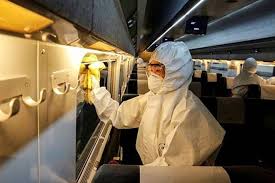Source: diabetes.org
The CDC has determined that COVID-19 is a serious public health threat.
In general people with diabetes face greater risks of complications when dealing with viral infections like flu, and that is likely to be true with COVID-19.
Recommended safety precautions are the same as for flu, such as frequent hand washing and covering coughs and sneezes with a tissue or your elbow. The CDC does not recommend the use of face masks by people who are not infected.
We encourage people with diabetes to follow the guidance of the CDC and to review how you manage sick days.
Preparing for a sick day can make it easier.
Before you get sick, make a plan:
- Gather your supplies:
- Phone numbers of your doctors and healthcare team, your pharmacy, and your insurance provider
- List of medications and doses (including vitamins and supplements)
- Simple carbs like regular soda, honey, jam, Jell-O, hard candies or popsicles to help keep your blood sugar up if you are at risk for lows and too ill to eat
- If a state of emergency is declared, get extra refills on your prescriptions so you do not have to leave the house
- Always have enough insulin for the week ahead, in case you get sick or cannot refill
- Extra supplies like rubbing alcohol and soap to wash your hands
- Glucagon and ketone strips, in case of lows and highs
- Talk to your healthcare team about the following:
- When to call your doctor’s office (for ketones, changes in food intake, medication adjustments)
- How often to check your blood sugar
- When to check for ketones
- Medications you should use for colds, flu, virus, and infections
- Any changes to your diabetes medications when you are sick
If you get sick, some common tips are as follows and may vary for each person:
- Drink lots of fluids. If you’re having trouble keeping water down, have small sips every 15 minutes or so throughout the day to avoid dehydration.
- If you are experiencing a low (BG below 70 mg/dl or your target range), eat 15 grams of simple carbs that are easy to digest like, honey, jam, Jell-O, hard candy, popsicles, juice or regular soda, and re-check your blood sugar in 15 minutes to make sure you are coming up. Check your blood sugar extra times throughout the day and night (generally, every 2-3 hours, with a CGM, monitor frequently)
- If your blood sugar has registered high (BG greater than 240mg/dl) more than 2 times in a row, check for ketones to avoid DKA.
- Call your doctor’s office immediately, if you have medium or large ketones (and if instructed to with trace or small ketones).
- Be aware that some CGM sensors (Dexcom G5, Medtronic Enlite, and Guardian) are impacted by Acetaminophen (Tylenol). Check with finger sticks to ensure accuracy.
- Change your lancet every time you check your blood sugar.
- Wash your hands and clean your injection/infusion and finger-stick sites with soap and water or rubbing alcohol.
- When you call your doctor:
- Have your glucose reading available
- Have your ketone reading available
- Keep track of your fluid consumption (you can use a 1-liter water bottle) and report
- Be clear on your symptoms (for example are nauseated? Just a stuffy nose?)
- Ask your questions on how to manage your diabetes
For more information, please contact us at 1-800-DIABETES.
